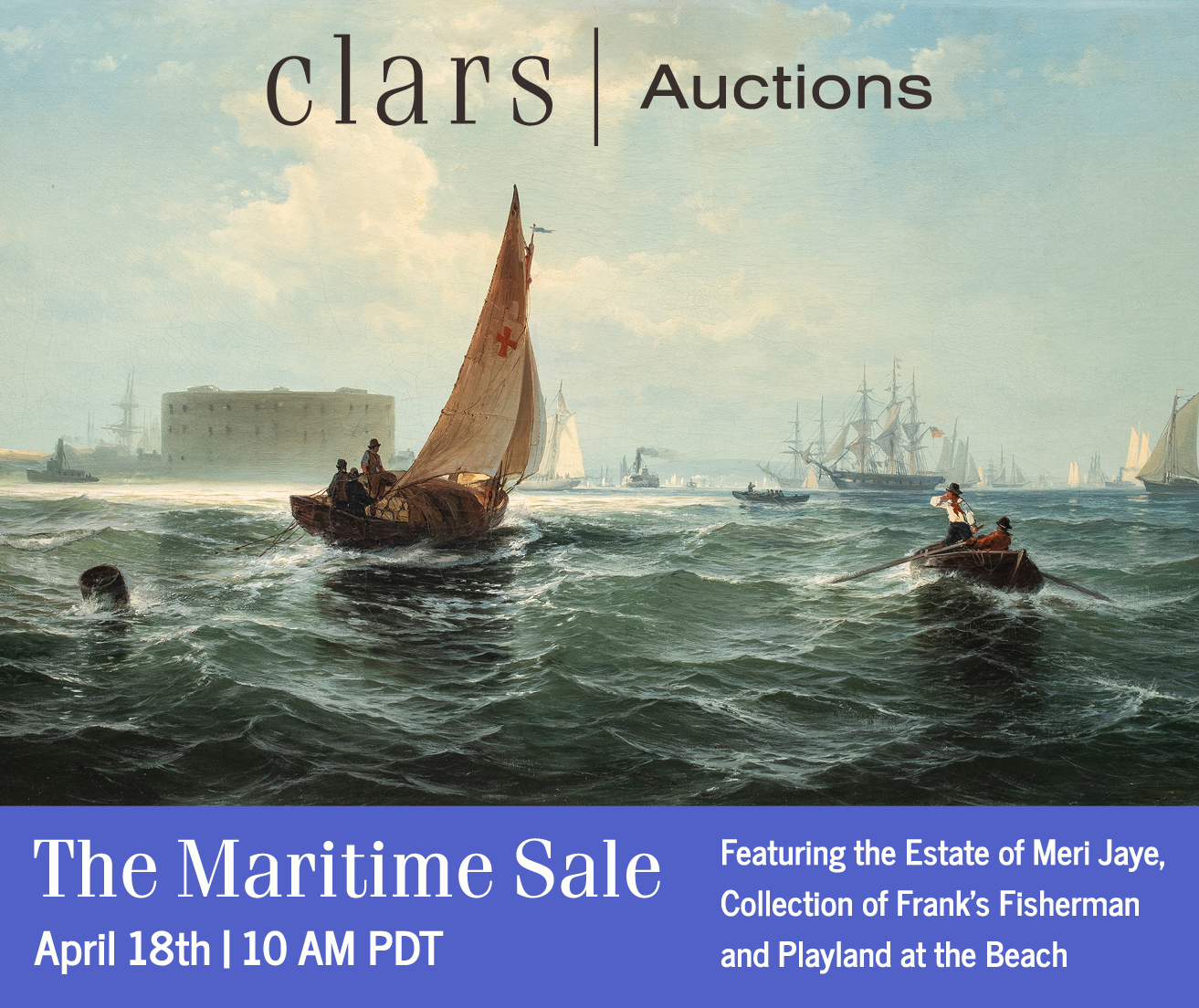A Chicken Shall Lead Them
December 7th, 2012
|
Even those unfamiliar with North Carolina’s obsession with these Moravian pottery figures will agree that this little chicken shaker is precious. It is small, old, beautifully glazed, undamaged, and in this part of the world highly coveted. The chicken shaker can rest in its new home in Virginia after leading the entire sale at $20,900. Mebane photo. Bidding was spirited among floor and phone bidders for this 99" x 48½" x 21" butler’s secretary bookcase, circa 1830. Brass pulls and surface are original. It sold to the phones for $6820. Vendorlator made this model 33 for Coca-Cola in the 1950’s. At 52" x 26" x 17½" it is small enough for home use. The phones and on-site bidders chased it until the on-site bidder caught it for $1430. This miniature jug was crafted by either Chester or Edward Webster, North Carolina potters who were born in Connecticut and set up shop in central North Carolina in the mid-19th century. The jug sold for $10,450. Mebane photo. Beginning in 1914, Gabriel Argy- Rousseau (French, 1885-1953) perfected the technique known as pâte de verre or glass paste. He reached the pinnacle of his fame in Paris in the 1920’s with hand-crafted objects of art for wealthy clients. The signed 10 3/8" vase in the Mebane sale was more Art Nouveau than many of Argy-Rousseau’s vases. A new owner bought it for $13,200. Mebane photo. The inscription on this 5¾" carved coconut reads, “Carved by a Confederate Soldier 3rd ARK-REGT INF 1861-65.” It is signed “Dr. G.K. Mason” and dated 1911. Decorations include tobacco leaves, an eyeball, face, and geometric and checkerboard designs in panels around the circumference of the coconut. It was found in Warren County, North Carolina. An antiques dealer from Chapel Hill bought it for $1100. The dealer described the coconut as “incredible” and hinted that the price was far less than what he could sell it for, except that in the age of smartphones, anyone can Google “confederate coconut 1911” and discover what he paid for it. Mebane photo. |
Mebane Antique Auction Gallery, Mebane, North Carolina
When we last visited auctioneer Jon Lambert in Mebane, North Carolina, he had crowned a Moravian turtle “King of Ceramic Beasts” (see M.A.D., February 2010, p. 29-C.) That humble 1805 press-molded pottery terrapin had been elevated to royalty at $100,000. On December 7, 2012, a tiny (4" high and 4" from its slightly worn beak to tail) Moravian chicken shaker reprised that event at a lower, but still significant, selling price. Bidding opened at $3000, and within seconds a Virginia collector captured the chicken for $20,900 (includes buyer’s premium). Like its friend Br’er Turtle in 2010, Br’er Chicken was the highest-priced lot of the sale.
The figural chicken in a soft green glaze has eight perforations in its breast for dispensing. Its maker, as was the turtle’s, is believed to have been master potter Rudolph Christ, whose shop was located in Salem, North Carolina. An observant picker discovered the chicken shaker at a Wilkes County, North Carolina, consignment store 55 miles from where it had been created over 170 years ago. There were no repairs.
Barry Sidden, a Moravian pottery collector from Winston-Salem, North Carolina, and an underbidder, said, “It’s the best Moravian pottery chicken I’ve ever seen.” He suspected that because the chicken’s details were slightly smoothed, it may have been produced later than 1808, possibly as late as 1840. Johanna Brown, director of collections and curator of decorative arts at the Museum of Early Southern Decorative Arts (MESDA) and successful bidder for the Moravian turtle, was not at this sale. Sidden speculated that MESDA had a large enough figural menagerie.
A 5½" Webster miniature ovoid jug was another piece of expensive North Carolina pottery that would fit in your shirt pocket. It was incised with what Lambert called a “quick drawn leaf” design. There was debate as to whether the maker was Chester (1799-1882) or Edward (1801-after 1882) Webster. The new buyer, who bought it for $10,450, may be able to confirm its origin.
Jon Lambert dispersed part of his own wide-ranging collection at the sale. He consigned three North Carolina “dirt dishes,” a whalebone netting needle, a one-drawer table with tapered legs and with a generous overhang, and a stunning Art Nouveau vase. There was no damage to the 10 3/8" tall Gabriel Argy-Rousseau pâte de verre vase. “I’m just tired of looking at it,” said Lambert. The signed and numbered vase had once been the possession of a governor of West Virginia. Bidding opened at $1000 with five phones active. But, as often happens at Mebane, an on-site bidder won control. William Cromer, M.D., sitting on the front row with his business partner Bryan Rose, kept the vase in North Carolina with a $13,200 price. The vase’s size and colors (greens, purples, pink, and lavender) were key selling factors, said Lambert after the sale.
Furniture with a back story was next on the sale’s center stage. The top two lots came from the Holt-Green-Nall estate in Burlington, North Carolina. The estate’s most stunning early 19th-century furniture may have been purchased by the Green family of Charleston, South Carolina, prior to the marriage of Daisy Holt (1879-1976) of Burlington to Walter G. Green. After Daisy’s death, many of her Charleston furnishings were brought to the Holt family home in Burlington. After the last member of the Holt family died, Jerrie and George Nall purchased the house and contents in 1995. After a lengthy restoration followed by tours and family gatherings, the Nalls donated the house to Elon University. The Nalls consigned the bulk of the furnishings to Mebane.
The Mebane staff attributed the Greens’ circa 1825 carved and stenciled sleigh bed to the New York firm of Brazilia Deming (1781-1854) and Erastus Bulkley (1798-1872). Deming and Bulkley found a ready market for their high-end elegant furniture in the South and opened a retail storefront on King Street in Charleston in 1818. The ebonized mahogany bed with extensive stenciling opened at $1000 with active phone and in-house participation. The house won. Kyle Mawst, a Raleigh, North Carolina, antiques dealer, purchased the bed for stock at $5225.
Mawst was briefly an underbidder for the Greens’ circa 1830 Federal butler’s secretary bookcase. Mebane attributed the elegant mahogany and veneer piece to Baltimore or Philadelphia. The upper case has veneered crown molding, two 13-pane glazed doors, and carved half-columns with urns, pineapples, and acanthus leaves. The half-columns continued down the lower case. The fitted interior contained six drawers with tiger maple fronts.
Bidding ended with a comic twist. After it opened at $1000, new in-house bidders were popping up everywhere. At $5000 it was one phone bidder versus one in-house couple. The phone bidder’s response to the $100 increments was rapid; the couple pondered each increase. When Lambert asked for $6300, the man gave his bidding card to his wife. If she wanted to go higher, it was up to her. The phone bidder prevailed at $6820.
Because of the scholarship and the guidance of Patricia Marshall (1958-2010) when she served as curator of furnishings and decorative arts at the North Carolina Museum of History, that museum has the world’s largest collection of Thomas Day furniture. Thomas Day (1801-1861) was a free black American who, prior to the Civil War, owned and operated the largest furniture manufactory in North Carolina. He took an exuberant and eclectic approach to furniture design, emphasizing large, wide S-scrolls and mahogany or rosewood veneers.
That description fit a dressing stand with mirror, which had descended in one of North Carolina’s great dynasties, the Motley Morehead family. The stand was consigned by Betty Motley Sartin. The winning bidder after very little competition was Michael Ausbon, assistant curator for decorative arts at the North Carolina Museum of History. The museum paid $2970. (See M.A.D., April 2008, p. 40-B, for a larger collection of Day furniture at the Mebane gallery.)
There have been two noteworthy changes at Mebane since 2010. Lambert added a 10% buyer’s premium in January 2012 to help keep his operation solvent. “Since the buyer’s premium, there has been an increase in the number of registered bidders,” said Lambert. He also has added television monitors at the front of the gallery for coins, jewelry, and some unwieldy lots, such as four- poster beds, although well over 95% of all merchandise for this sale was brought to the front of the gallery for its time on stage.
Other changes are coming. Lambert plans to produce a catalog for his major sales. At the December sale, a published itinerary was provided as well as about ten free double- and single-sheet mini-catalogs. These covered selected categories such as North Carolina pottery and the Holt-Green-Nall estate. Lambert is a master at building enthusiasm for items. He takes time to relate the importance, provenance, and discovery of all major lots. If he puts all that into catalogs, he may find himself with little to say on the podium.
We hope no change will ever dampen the sheer exuberance and old-timey atmosphere at a Mebane sale. There is no Internet bidding at Mebane, so the place is always packed. There were 350 people in the gallery and at least 20 of them were moving about the room at any one time. Chairs range from folding chairs to upholstered armchairs to padded church pews. The front of the gallery resembles a three-ring circus—activity is constant, lots coming in and going out. It is a pleasure to immerse oneself in the experience.
For more information, visit (www.mebaneauction.com) or call (800) 563-9095.
|
|
|
|
Originally published in the March 2013 issue of Maine Antique Digest. © 2013 Maine Antique Digest






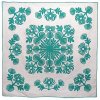
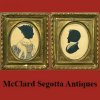








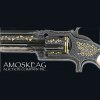



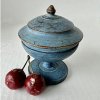







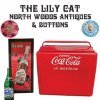





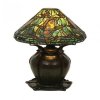







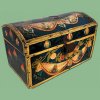








 The 1973 model 1050 was the last American-made Wurlitzer jukebox. In 2006 the Wurlitzer Company was acquired by the Gibson Guitar Corporation. An in-house buyer bought the 1050 for $2200.
The 1973 model 1050 was the last American-made Wurlitzer jukebox. In 2006 the Wurlitzer Company was acquired by the Gibson Guitar Corporation. An in-house buyer bought the 1050 for $2200. After Daisy Holt Green’s death, these cast-iron garden urns were brought from Charleston, South Carolina, to the Holt family home in Burlington, North Carolina. Each is 30½" x 37" x 24". The pair sold in house for $1650.
After Daisy Holt Green’s death, these cast-iron garden urns were brought from Charleston, South Carolina, to the Holt family home in Burlington, North Carolina. Each is 30½" x 37" x 24". The pair sold in house for $1650.
